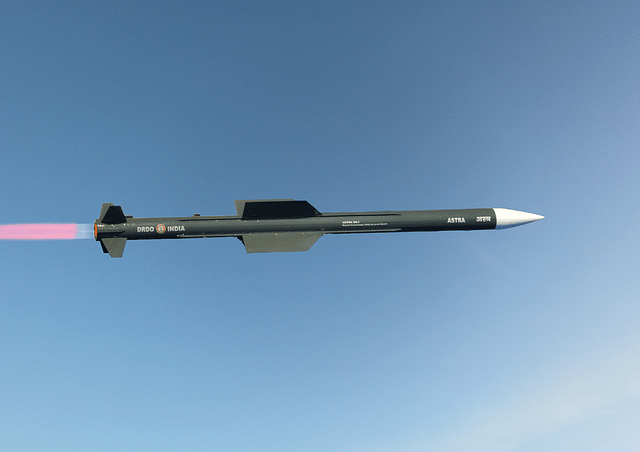
All About India’s 160 Km Range Astra Mark-II Missile, Which Could Soon Be Tested For The First Time
India could test Astra Mark-II missile this week, reports say.
India could test its Astra Mark-II Beyond Visual Range Air-to-Air missile (BVRAAM) for the first time as early as this week, the New Indian Express reports.
Astra Mark-II, a new version of the Astra missile, India’s first indigenous beyond visual range air-to-air missile, has a range of around 160 km.
While the 110 km range Astra Mark-I has cleared all tests and ordered in large numbers — 248 missiles, including 48 for the Indian Navy — from state-owned Bharat Dynamics Limited, the Mark-II version of the missile, being developed by the Defence Research and Development Organisation (DRDO), is entering developmental trial.
This trial of the missile is likely to be conducted from a ground launcher being set up at Launch Complex III of Integrated Test Range, located in Balasore, Odisha. The trial is being carried out to test the missile’s ballistic performance.
Astra Mark-II will be tested from a fighter only after the safe release of the missile from the ground launcher and its propulsion and navigation systems have been validated.
Sources quoted by the New Indian Express say the window for the test starts on 18 February and ends on 20 February, adding that the missile has been integrated with the launcher and final checks are being carried out.
The missile could be tested as early as today (18 February), the report adds.
However, other reports, including this by news agency ANI, say the missile, Astra Mark-II, is likely to be tested in the second half of 2021.
Astra Mark-II will have improved jammer resistance and an indigenous seeker. The missile will be equipped with a dual-pulse rocket motor, critical for its long range.
The development of Astra missile began in 2001. The Mark-I version of the missile was tested for the first time in May 2003. Since then, Astra Mark-I has been test-fired multiple times, and has been integrated with Su-30 MKI. In September 2019, the missile, test-fired from an Su-30MKI, hit a target 90 km away.
Apart from the Su-30 MKIs, it will be integrated with Tejas Mark-1A (deal for 83 signed earlier this month at Aero India) and upgraded MiG-29s of the Air Force.
In 2018, the DRDO informed Parliament that it had formally sanctioned the Astra Mark-II project, although work on it had began informally much earlier.
A solid fuel ducted ramjet or SFDR propulsion system, which will take the missile’s performance to the next level, was tested in February 2019.
SFDR propulsion, being developed in partnership with Russia, is critical for the missile’s performance in the terminal phase of its flight towards the target. Meteor missile, which India has procured with Rafale fighters, also depends on its ramjet propulsion for “more energy to maneuver during the endgame of the engagement”.
DRDO plans to complete the development of the missile over the next two years.
While the DRDO’s plan for Astra Mark-II is to mirror the performance of MBDA’s Meteor missile, it may take a few more years to reach there, experts say.